NEWS

Field hockey is played on gravel, natural grass, sand-based or water-based artificial turf, with a small, hard ball. The game is popular among both males and females in many parts of the world, particularly in Europe, Asia, Australia, New Zealand and South Africa. In most countries, the game is played between single-sex sides, although they can be mixed-sex.
Modern field hockey sticks are J-shaped and constructed of a composite of wood, glass fibre or carbon fiber and have a curved hook at the playing end, a flat surface on the playing side and curved surface on the rear side. While current field hockey appeared in the mid-18th century in England, primarily in schools, it was not until the first half of the 19th century that it became firmly established. The first club was created in 1849 at Black heath in south-east London. Field hockey is the national sport of India and Pakistan.
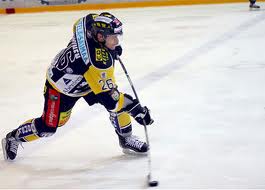
Ice hockey is played on a large flat area of ice, using a three-inch-diameter (76.2 mm) vulcanized rubber disc called a puck. This puck is often frozen before high-level games to decrease the amount of bouncing and friction on the ice. The game is contested between two teams of skaters. The game is played all over North America, Europe and in many other countries around the world to varying extent. It is the most popular sport in Canada, Finland, Latvia, the Czech Republic, and Slovakia.
The governing body of international play is the 66-member International Ice Hockey Federation (IIHF). Men's ice hockey has been played at the Winter Olympics since 1924, and was in the 1920 Summer Olympics. Women's ice hockey was added to the Winter Olympics in 1998. North America's National Hockey League (NHL) is the strongest professional ice hockey league, drawing top ice hockey players from around the globe. The NHL rules are slightly different from those used in Olympic ice hockey over many categories.
Ice hockey sticks are long L-shaped sticks made of wood, graphite, or composites with a blade at the bottom that can lie flat on the playing surface when the stick is held upright and can curve either way, legally, as to help a left- or right-handed player gain an advantage.
There are early representations and reports of ice hockey-type games being played on ice in the Netherlands, and reports from Canada from the beginning of the nineteenth century, but the modern game was initially organized by students at McGill University, Montreal in 1875 who, by two years later, codified the first set of ice hockey rules and organized the first teams.
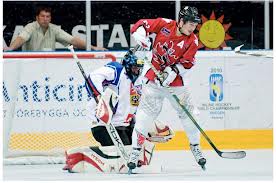
Inline hockey is a variation of roller hockey very similar to ice hockey, from which it is derived. Inline hockey is played by two teams, consisting of four skaters and one goalie, on a dry rink divided into two halves by a center line, with one net at each end of the rink. The game is played in three 15-minute periods with a variation of the ice hockey off-side rule. Icings are also called, but are usually referred to as illegal clearing. For rink dimensions and an overview of the rules of the game, see IIHF Inline Rules. Some leagues and competitions do not follow the IIHF regulations, in particular USA Inline and Canada Inline.
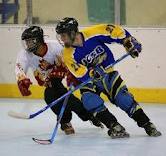
Roller hockey, also known as quad hockey. This sport is played in over sixty countries and has a worldwide following. Roller hockey was a demonstration sport at the 1992 Barcelona Summer Olympics.
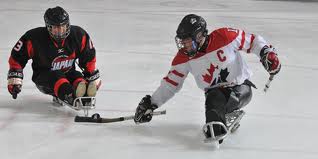
Sledge hockey is a form of ice hockey designed for players with physical disabilities affecting their lower bodies. Players sit on double-bladed sledges and use two sticks; each stick has a blade at one end and small picks at the other. Players use the sticks to pass, stickhandle and shoot the puck, and to propel their sledges. The rules are very similar to IIHF ice hockey rules.
Canada is a recognized international leader in the development of the sport, and of equipment for players. Much of the equipment for the sport was first developed in Canada, such as sledge hockey sticks laminated with fiberglass, as well as aluminum shafts with hand carved insert blades and special aluminum sledges with regulation skate blades.
Based on ice sledge hockey, inline sledge hockey is played to the same rules as inline puck hockey and has been made possible by the design and manufacture of inline sledges by RGK, Europe’s premier sports wheelchair maker.
There is no classification point system dictating who can play inline sledge hockey, unlike the situation with other team sports such as wheelchair basketball and wheelchair rugby. Inline sledge hockey is being developed to allow everyone, regardless of whether they have a disability or not, to complete up to world championship level based solely on talent and ability. This makes inline sledge hockey truly inclusive.
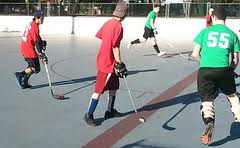
Also known as road hockey, this is a dry-land variant of ice and roller hockey played on a hard surface . Most of the time, a ball is used instead of a puck, and generally no protective equipment is worn. Street hockey is played year round.
Recent Post